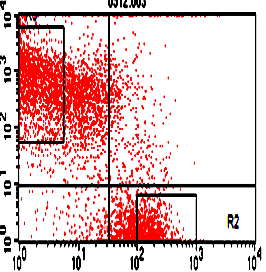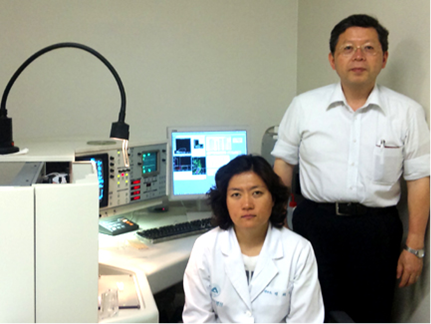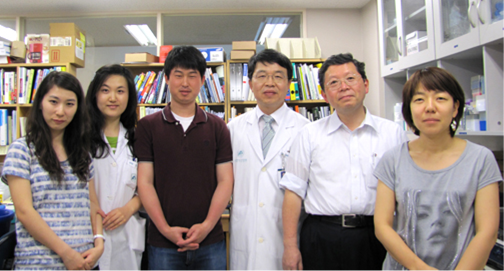Dr. Fukamachi from Japan stays in AMC, Korea
A3 Foresight Program: Collaborative Research on the Role of Epigenetic Pathway in Gastric Carcinogenesis
Report of a visit to AMC in Korea (May 10 to 21, 2010)
HIROSHI FUKAMACHI (Department of Molecular Oncology, Tokyo Medical and Dental University)
Host researcher
Prof. Se Jin Jang (Department of Pathology, Asan Medical Center, University of Ulsan College of Medicine)
Summary
I visited Prof. Se Jin Jang’ s laboratory (Department of Pathology, Asan Medical Center, University of Ulsan College of Medicine) in Korea, and a collaborative research was performed on the role of epigenetic pathway in gastric carcinogenesis. The main purpose of my visit was to identify gastric tumor-initiating cells in freshly dissected gastric tumor specimens. Thus I examined tumorigenicity by sorting cells by FACS, and by subcutaneouly injecting them into NOD-Scid mice. During my stay in AMC, I discussed with scientists in AMC. It was a great experience for me to get further insights on the mechanism of gastric carcinogenesis. I deeply thank Prof. Jang, Dr. Seol and other memebers of AMC for giving me a chance to do experiment in a wonderful institute.
1. Background
As stated in a report by Dr. Seol, we have established human gastric xenograft lines which were maintained by subcutaneouly injecting tumor tissues into nude mice. These xenograaft lines are unique because not only tumor types but also cell surface antigen profiles are maintained during passages in vivo. Using these lines, we found that tumorigenic gastric epithelial cells expressed specific markers on them. But it had not been examined whether these markers were expressed on tumorigenic cells in freshly dissected gastric cancer tissues. In TMDU, it is very difficult to examie it because operations of advanced gastric cancers are rare (about 1 case per month) in recent years, partly because surgeons in TMDU are specialized in intra-abdominal operations of early gastric cancers. In AMC, advanced gastric cancers are more frequently (several cases per day) dissected out. We thus planned to do expeiment in AMC to examine tumorigenicity of sorted cells from freshly disscted specimen in collaboration with Professor Jang and Dr. Seol of Department of Pathology.
2. The experiment in AMC.
I started my experiment on May 11, and a total of 18 experiments with freshly dissected gastric tumors could be done by May 20. FACS analysis showed that the gastric tumor cells could be separated into two populations by cell surface markers. The results were essentailly the same to those obtained with xenografts, suggesting that cell surface antigen profiles were similar between xenografts and freshly dissected tumors. It is an important problem which cell populations are tumorgenic, and this is now under investingation, by examining tumor formation in NOD-Scid mice into which sorted cells were subcutaneously injected. I hope that good results will be obtained in the coming August (12 weeks after injection).

Fig. 1: Cell surface marker expression profile of a freshly dissected gastric tumor.

Fig. 2: A photograph with Ms. Hey-Jin Jeung who is specialized in FACS analysis at Asan Life Science Laboratory.
3. Discussion with researchres in AMC
A seminar with the title “Identification of tumor-initiating cells in human gastric cancers” was held on May 17, 2010 at the Department of Pathology, AMC. I also discussed with scientists in AMC on the identification of tumor-initiating cells.
4. Acknowledgments
I deeply thank Prof. Jang and Dr. Seol for their help and kindness during my stay in AMC. In AMC, we could get tumor tissues at excellent condition. We think that it a definitive point why we could get good results, and we strongly appreciate doctors in the Department of Gastric Surgery for their collaboration. I also acknowledge Ms. Hey-Jin Jeung, Asan Life Science Laboratory, for her skilled help in analyzing cell surface antigens by FACS.

Fig.3: A photograph with members of Prof. Jang’s laboratory. I deeply thank Dr. Seol (right edge) and Prof. Jang (thrid from the right).



